Animal Welfare: Good for Livestock, Good for Business
INSIDE ACADEMIA
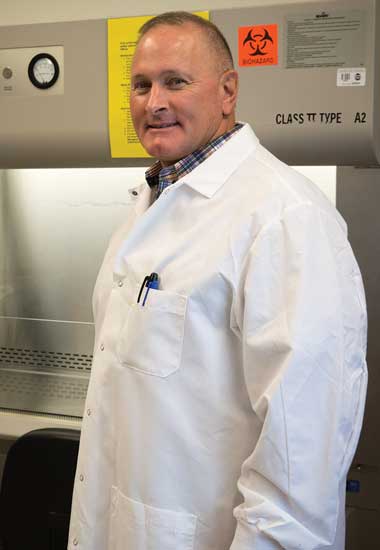 Two professors at Colorado State University explain how inhumane treatment affects livestock and producers’ bottom line.
Two professors at Colorado State University explain how inhumane treatment affects livestock and producers’ bottom line.
What constitutes the humane treatment of food animals? Colorado State University professor Temple Grandin has spent her entire career answering that question—designing livestock handling equipment for food animal operations around the world, including widely used equipment to ensure that the handling and slaughter of cattle occur in ways that respect the psychology of each animal. Her research and that of Colorado State University professor Keith Belk illuminate how the humane treatment of food animals not only benefits the animals but also ensures better quality meat and meat products for consumers.
Animal Welfare: Getting It Right
There is a growing public perception that people who work in the livestock industry and people who consume bacon, hamburgers, milk, cheese, and other animal products do not truly care about the welfare of food animals. This perception is fueled by an ideology founded on consumers’ and activists’ developing their own concepts of how cattle and other livestock feel, how they would want to live, what they would want to eat, and other assumptions about how food animals would behave if given the opportunity. Perhaps no one knows more about how food animals think and behave than Grandin, a professor in the department of animal science at Colorado State University. “A lot of average consumers now, especially younger ones, they don’t know where anything comes from,” Grandin says. “Since they don’t know where just about anything comes from, there’s going to be lots of things [they get] wrong.” Food animals cannot speak, so they don’t think in words, and their brains are not as sophisticated as the minds of humans. “An animal’s world is sensory-based; their memories are going to be pictures [and] sounds,” Grandin clarifies. “It’s not word-based.”
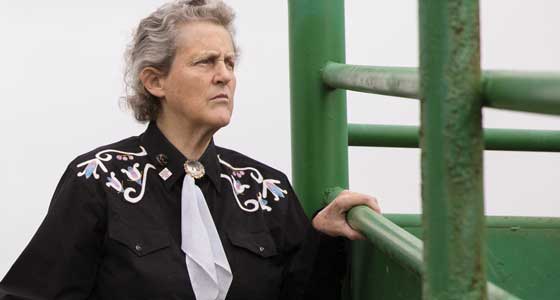 Grandin has been consulting on livestock handling and defining humane treatment of food animals for more than 35 years. Because she has Asperger’s syndrome, she perceives things very differently than average consumers and livestock handlers do, allowing her to empathize with cattle and other livestock in ways that most others cannot. “When I first started, I thought everybody thought in pictures. I didn’t know my thinking was different. It was so obvious to me to look at what [food animals] were seeing,” she says. This puts Grandin in a somewhat unique position: Her empathy for food animals has not reduced or eliminated her consumption of meat and animal products, but it has elevated her understanding of the psychology of animals, helped her design facilities and equipment for the humane handling of livestock, and formed her philosophy about their lives. “I feel very strongly that the animals that we raise for food, we’ve got to give them a decent life—a life worth living,” she says. Through a lifetime of working with supply managers and workers at farms and slaughter plants, she has catalyzed systemwide changes in the livestock industry that have gone a long way to ensuring that livestock have decent lives.
Grandin has been consulting on livestock handling and defining humane treatment of food animals for more than 35 years. Because she has Asperger’s syndrome, she perceives things very differently than average consumers and livestock handlers do, allowing her to empathize with cattle and other livestock in ways that most others cannot. “When I first started, I thought everybody thought in pictures. I didn’t know my thinking was different. It was so obvious to me to look at what [food animals] were seeing,” she says. This puts Grandin in a somewhat unique position: Her empathy for food animals has not reduced or eliminated her consumption of meat and animal products, but it has elevated her understanding of the psychology of animals, helped her design facilities and equipment for the humane handling of livestock, and formed her philosophy about their lives. “I feel very strongly that the animals that we raise for food, we’ve got to give them a decent life—a life worth living,” she says. Through a lifetime of working with supply managers and workers at farms and slaughter plants, she has catalyzed systemwide changes in the livestock industry that have gone a long way to ensuring that livestock have decent lives.
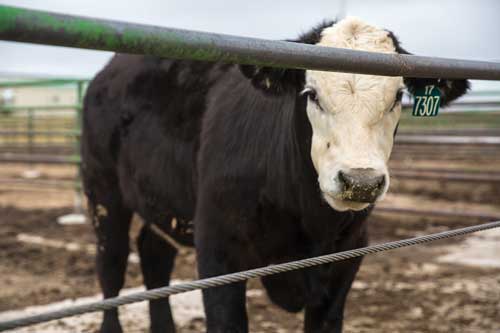 Infusing the Meat Industry With Humanity
Infusing the Meat Industry With Humanity
Early in her career, Grandin focused most of her attention on designing equipment for cattle feedlots. At that time, practices and procedures for handling cattle were not great. “I started out in the early [1970s] in the Arizona feedlots, … designing things for feed yards,” Grandin says. “The handling was awful in the [1970s], and I saw the handling as something I could fix. I call those my cattle formative years.” After spending some time designing equipment such as curved corrals and chute systems for handling cattle on ranches and feedlots, she turned her attention to designing equipment to improve animal experiences at slaughter plants. “[The] slaughterhouse is actually the easy part to fix to give them a quick, painless death,” she asserts, but despite all of the great new equipment designs she had deployed on ranches, feedlots, and slaughter plants, she realized that some problems with livestock handling persisted. “One of the mistakes I made when I was in my 20s is I thought I could solve every problem with engineering. If I could just build the perfect system, everything will be fine,” Grandin reflects. “No, it doesn’t work. Engineering is only half of the equation; the other half of the equation is the management.” Inadequate maintenance of captive bolt stunners, frequent use of electric prodding, muddy feedlots, and poorly trained workers are management issues that always impair the welfare equation.
To further improve the welfare of livestock from a management perspective, Grandin relied on four strategic criteria: 1) eliminate or minimize catastrophic events, 2) eliminate obvious animal suffering, 3) address animals’ behavioral needs, and 4) ensure that animals have positive emotions. Armed with these criteria as well as a simple scoring system she developed, Grandin made significant improvements in the livestock industry. To eliminate or minimize catastrophic events involving livestock, Grandin persuades livestock suppliers and plant managers to eradicate any instances of purposeful physical abuse to animals and minimize the occurrence of emaciated or lame livestock on ranches and feedlots. By pointing out that it takes only one videotaped instance of a cow being hit with a steel rod or a few emaciated cattle stumbling around pastures and feedlots to ruin the reputation of a supplier and an entire industry, Grandin meets her first criterion for animal welfare.
Grandin uses her scoring system to meet her second criterion, eliminating obvious animal suffering. “The next thing I gotta do is to work on problems that cause obvious suffering. And one big issue is lameness—sore legs, sore feet. Dairy cattle have it; beef cattle have got some problems with it; chickens can have it,” Grandin points out. “I can measure that, and I need to get it down to a very low level. I can’t get it down to zero, but it should be down to like 5%.” She therefore trains managers and employees to pay close attention to signs of physical ailments, such as whether the animals are too skinny, have sores or lesions, or are too dirty. In many instances, if these problems are caught early, there are simple fixes to address them.
One significant cause of animal suffering is illness that could be either prevented with vaccinations or treated with antibiotics. To meet the growing consumer demand for antibiotic-free meat, some beef and dairy producers refrain from treating animals that are obviously suffering from illnesses. “The problem with [antibiotic-free] animals is, what do you do with sick animals?” Grandin considers. “This is where a large corporation is actually better.” Large beef and dairy production operations that generate both organic and conventional animal products can treat organic animals with antibiotics and continue raising them as conventional. For example, at Fair Oaks Farms, which is open to the public, “he has regular and he has organic,” Grandin says. “So if an animal gets sick, he just moves it over to the regular side and treats it. But let’s say you’re a small producer, and an animal gets sick; the temptation to not treat is great.” Grandin’s travels across the United States and around the world have exposed her to a lot of livestock production systems, and with this field experience, she has made a significant observation: “I’ve seen too many coughing cattle that have not gotten treated even though they were supposed to,” she laments.
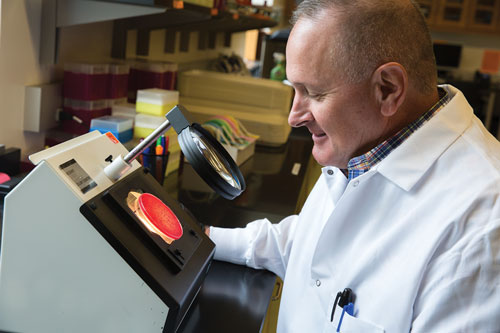 Belk, an animal science professor whose expertise is meat safety and meat quality, concurs: “When animals contract an illness that is caused by an infection that can be treated adequately with an antibiotic, then they should have access to those antibiotics. … A lot of people question why would you ever use antibiotics during production systems or during growth of animals, and the reason for doing so is to optimize the health of the animals.” He clarifies that antibiotics are administered to cattle and other ruminant animals for two reasons. “The first reason is to treat a clinical disease. So if an animal comes into a finishing or feedlot operation and they’re showing clinical signs of illness, then it would be unsatisfactory to not treat the animal and address the health issue. The second reason that we use antibiotics and other compounds in production is to optimize health,” he explains. In December 2015, the U.S. Food and Drug Administration issued the Veterinary Feed Directive (VFD) final rule. The VFD final rule outlines the process for authorizing the use of VFD drugs and provides a framework for the use of medically important antimicrobials in feed when necessary for animal health. Moreover, as of the end of 2016, it is illegal in the United States to use medically important antimicrobials in animals for growth promotion and feed efficiency (both of which facilitate uniformity of animal size). “I know that the industry right now—particularly the beef industry—is spending an awful lot of money, trying to find substitutes for using [certain antimicrobials] in feeding,” Belk reveals. “The reason that they’re doing that is they realize that judicious use of antibiotics is important.” Researchers are investigating ways in which they can replace the use of antimicrobials with technologies and production practices that can address the health needs of livestock. “Over time, I think that we’re going to find some suitable substitutes for some of the antibiotics that are currently being used in production,” Belk says. “And as we’re able to do that from a research perspective, then those technologies will become available to producers.”
Belk, an animal science professor whose expertise is meat safety and meat quality, concurs: “When animals contract an illness that is caused by an infection that can be treated adequately with an antibiotic, then they should have access to those antibiotics. … A lot of people question why would you ever use antibiotics during production systems or during growth of animals, and the reason for doing so is to optimize the health of the animals.” He clarifies that antibiotics are administered to cattle and other ruminant animals for two reasons. “The first reason is to treat a clinical disease. So if an animal comes into a finishing or feedlot operation and they’re showing clinical signs of illness, then it would be unsatisfactory to not treat the animal and address the health issue. The second reason that we use antibiotics and other compounds in production is to optimize health,” he explains. In December 2015, the U.S. Food and Drug Administration issued the Veterinary Feed Directive (VFD) final rule. The VFD final rule outlines the process for authorizing the use of VFD drugs and provides a framework for the use of medically important antimicrobials in feed when necessary for animal health. Moreover, as of the end of 2016, it is illegal in the United States to use medically important antimicrobials in animals for growth promotion and feed efficiency (both of which facilitate uniformity of animal size). “I know that the industry right now—particularly the beef industry—is spending an awful lot of money, trying to find substitutes for using [certain antimicrobials] in feeding,” Belk reveals. “The reason that they’re doing that is they realize that judicious use of antibiotics is important.” Researchers are investigating ways in which they can replace the use of antimicrobials with technologies and production practices that can address the health needs of livestock. “Over time, I think that we’re going to find some suitable substitutes for some of the antibiotics that are currently being used in production,” Belk says. “And as we’re able to do that from a research perspective, then those technologies will become available to producers.”
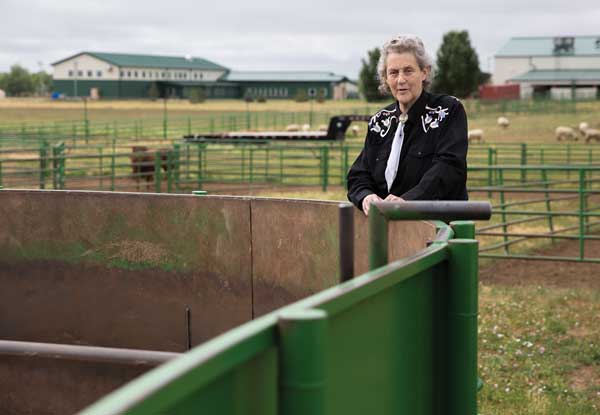 Thinking Like Food Animals
Thinking Like Food Animals
Next on Grandin’s checklist of animal welfare criteria is addressing animal behavioral needs. “Chickens want to lay their eggs in a nest box; they want privacy when they lay their eggs. Pigs want to root in roughage. These are behavioral needs,” Grandin says. One aspect of animal behavior prevented the smooth transition of cattle and other livestock through corrals and chutes guiding them to barns or transport vehicles. “In my very early work, it seemed to me the best thing to do was to look at what cattle were seeing. I noticed that [if] there was a shadow on a chute, the cattle would refuse to walk through the chute,” Grandin explains. “We had to do lots of repairs on equipment, fixing slippery floors, moving smaller groups of animals, [and] changing lighting to get rid of reflections that spooked animals. … It’s amazing what you can do with a light. Light up a chute [because] cattle don’t like to go in the dark [and] pigs don’t like to go in the dark. Light up the entrance of a chute, [and] they’ll walk right in. Move a light to make a reflection disappear.” Other things that would cause stress in livestock and make them difficult to handle are puddles with sparkling reflections, rattling chains, air drafts, clothing hanging on fences, changes in floor texture, and so on. Supply managers and plant employees were oblivious to how such sensory triggers and visual roadblocks changed animal behavior, but Grandin noticed, and by remedying such problems, she improved animal behavior (keeping them calm) and handling.
The final animal welfare criterion is ensuring that animals have positive emotions—that is, making sure the animals are happy. “Animals have emotions. In my books Animals in Translation and Animals Make Us Human, we review the Panksepp seven emotional systems that humans and all [mammals] have,” Grandin says. According to the late neuroscientist Jaak Panksepp, who taught psychobiology, neuroscience, and psychology at various universities, there are seven emotions innate to all mammals: 1) seeking/desire, 2) rage/anger, 3) fear/anxiety, 4) lust/sexual, 5) care/nurturing, 6) grief/distress, and 7) play/social engagement. “The only difference between people and the animals is the size of the cortex. We’ve got a computer sitting up here above those emotions that animals don’t have. They have a much smaller computer. But the emotional systems down at the base of the brain, they’re the same,” Grandin adds.
Many animal rights activists promote the notion that cattle (and other livestock) are happiest outdoors, grazing on grass and pasture, but that simply is not possible, nor appropriate, all the time in every climate. “A basic thing I would say about activism is before you activate about something, you need to get out in the field and find out what’s actually going on,” Grandin asserts. “There are some parts of the world where having [cattle] outside isn’t an option. … One of the problems you’re going to have in the [United States] is getting enough pasture for year-round grazing—otherwise you have to put it up as silage. There are certain parts of the world like New Zealand, there’s a few places in the [United States], [and] some parts of South America where they have true year-round grass. I have been there.” Moreover, most cattle do not fare well in temperature extremes, and unbeknownst to many consumers, cattle actually enjoy eating grain. “Cattle love to eat grain. Oh, they come running. It’s a diet of cookies and ice cream. They like their junk food. [As with] a lot of things, it’s moderation. You can go overboard on feeding grain to the point where you’re gonna get problems like liver abscesses,” Grandin says. “I can measure that at the slaughter-house.”
Grandin is confident that when production managers, farm workers, and plant employees meet her four criteria for animal welfare, the condition, care, and treatment of food animals rise significantly. “In 1999 and the year 2000, I worked with McDonald’s, Wendy’s, and other large companies to implement the scoring system. And I saw more change in that two-year period than I had seen in my whole entire career before that because I forced them to manage things,” Grandin concludes. Besides the conscientious motivation of humane treatment of food animals being the right thing to do, there are significant economic incentives to improving animal welfare. Neglect or otherwise poor handling of food animals can ultimately lead to reduced meat quality, resulting in product being sold for less or not at all.
Poor Treatment = Poor Quality
For example, meat from cattle and other livestock that are stressed tends to be tough, so it is of poorer quality and has lower economic value. In particular, when cattle are exposed to long-term stress caused by climate conditions (i.e., extremes in temperature, excessive precipitation, and wind), rough handling, transportation issues, or anything else that raises their stress levels, this can result in meat characterized as dark-cutting beef. “[In] most animals, including human beings, when we need quick energy for muscle contraction, we use glycogen, which is a sugar that’s built up in your muscle that gives you quick access to energy (to ATP) that’s needed for muscle contraction. If an animal is exposed to a long-term stress, [it] burns up all of that glycogen sugar that’s in the muscle to start with, so there’s no more stored there for the animal to use for energy. They process that sugar, which the by-product of is lactic acid,” Belk explains. When cattle are harvested, normally there is some lactic acid (the result of post-mortem glycolysis) in the muscle/meat to keep the pH of the meat below 5.7, giving the meat a bright red color; good quality meat typically has a pH of around 5.4. But in cattle exposed to long-term stress, there is no lactic acid available because the glycogen has been completely used up, so the pH of the meat rises above 5.7. “As a consequence of that, it changes the net charge on the proteins that make up the muscle. Those proteins now can bind more water tissue to it, and that changes the way the muscle appears. ... In a really badly stressed animal, it’ll look almost black or a very dark color,” Belk asserts. “The graders will discount the value of that carcass when it comes across the grading scan if they see the darkness. It is always a consequence of the pH not declining to the level that it should decline to.”
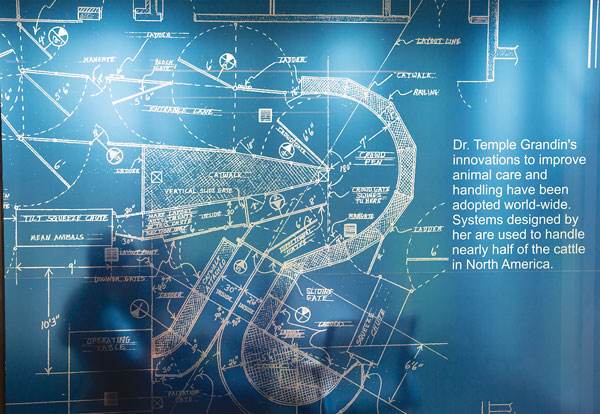 Another welfare issue in cattle that affects meat quality is bruising. Bruising in cattle and other livestock can result from a variety of environmental or managerial factors, such as rough handling, inadequate handling equipment, electric prodding, fighting among animals (especially bulls) to establish social order, and the presence of horns. Meat from cattle and livestock that are bruised cannot be sold for human consumption at all. “Bruising in and of itself is expensive because all of that product can’t be sold to human beings, so it has to be trimmed off in a packing plant. It’s costly, so … producers’ reducing both the number and the seriousness of the bruises that we see on livestock is an important aspect of adding value back into the production system,” Belk says. The industry has made great progress in reducing the number of really bad bruises on food animals, but certain types of bruising in cattle has persisted. “Overall, we’ve actually made progress in the number of really bad bruises that you see on animals as they’re presented for processing at plants. One of the reasons we think … that’s the case is because we’ve improved animal welfare, animal care, and practices in the facilities,” Belk reveals. “That said, there is a tendency right now for us to see more bruises. They’re not as severe in terms of the damage that they cause, but there’s more of them. We think it’s because animals are getting bigger.” Although food animals are getting bigger, the standardized equipment used to handle them has stayed the same. “We’ve begun, I think as an industry, to recognize that … problem, and we’re starting to re-engineer and redesign some of the equipment that’s used to handle and to transport livestock so that we address that issue,” Belk says.
Another welfare issue in cattle that affects meat quality is bruising. Bruising in cattle and other livestock can result from a variety of environmental or managerial factors, such as rough handling, inadequate handling equipment, electric prodding, fighting among animals (especially bulls) to establish social order, and the presence of horns. Meat from cattle and livestock that are bruised cannot be sold for human consumption at all. “Bruising in and of itself is expensive because all of that product can’t be sold to human beings, so it has to be trimmed off in a packing plant. It’s costly, so … producers’ reducing both the number and the seriousness of the bruises that we see on livestock is an important aspect of adding value back into the production system,” Belk says. The industry has made great progress in reducing the number of really bad bruises on food animals, but certain types of bruising in cattle has persisted. “Overall, we’ve actually made progress in the number of really bad bruises that you see on animals as they’re presented for processing at plants. One of the reasons we think … that’s the case is because we’ve improved animal welfare, animal care, and practices in the facilities,” Belk reveals. “That said, there is a tendency right now for us to see more bruises. They’re not as severe in terms of the damage that they cause, but there’s more of them. We think it’s because animals are getting bigger.” Although food animals are getting bigger, the standardized equipment used to handle them has stayed the same. “We’ve begun, I think as an industry, to recognize that … problem, and we’re starting to re-engineer and redesign some of the equipment that’s used to handle and to transport livestock so that we address that issue,” Belk says.
Grandin and Belk have spent many years improving the livestock industry through good, extensive research that is being applied in the field, thereby elevating the welfare of food animals and improving the quality of meat around the world. “I think it’s always the right thing to do: … to handle animals appropriately with the dignity [they deserve],” Belk concludes. “I get to work with Temple Grandin, so I have the opportunity to learn a lot from her. … We can teach producers the right way to handle livestock as they’re being worked or processed; I think that’s something that really didn’t exist—those kinds of training programs—until maybe the last 10 or 15 years. That’s probably going a long way towards improving and minimizing the issues that are faced by livestock.”
Toni Tarver is senior technical editor of Food Technology magazine ([email protected]).
